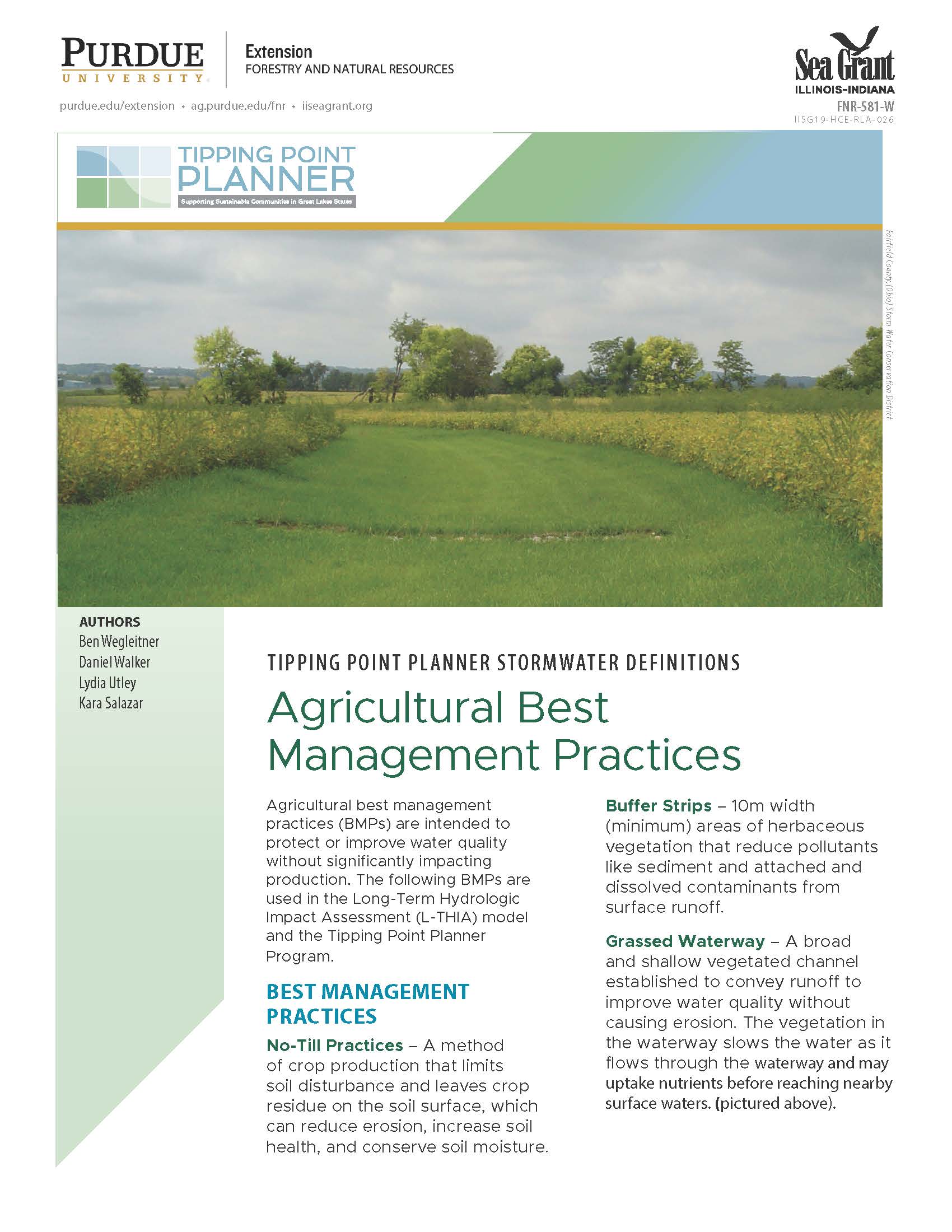
File Size: 1.63 MB
This fact sheet is for boaters to educate them on handling oil and fuel spills.
En Español
Una Guía para los Aficianados a la Navegación en español está aquí.

This fact sheet is for boaters to educate them on handling oil and fuel spills.
Una Guía para los Aficianados a la Navegación en español está aquí.

This publication discusses the benefits of several agricultural best management practices for protecting or improving water quality. These BMPs are used in the Long-Term Hydrologic Impact Assessment model in the Tipping Point Planner decision support system.
It is available through the Purdue Extension Education Store at https://edustore.purdue.edu/FNR-581-W.html.

Indiana’s ecosystems will experience changes in water quantity, water temperature, ice cover, water clarity, and oxygen content as the state’s temperature and rainfall patterns shift. The plants and animals living in these aquatic ecosystems will undergo changes that will vary based on the species and the specific places they inhabit.
Part of the Indiana Climate Change Impacts Assessment (IN CCIA).
Download the report from Purdue e-Pubs. DOI: 10.5703/1288284316782

A Great Lakes Area of Concern, Ashtabula River in Ohio has undergone a cleanup through the Great Lakes Legacy Act. As a result, the city of Ashtabula has seen environmental, economic, and quality of life benefits.
Revitalización de Ashtabula en español está aquí.

This product is a guide to selecting low-input turfgrass in the northeastern Illinois region.
The original brochure is available from the Chicago Metropolitan Agency for Planning (https://www.cmap.illinois.gov/documents/10180/296668/FY19-0072_BEYOND_BLUEGRASS_BROCHURE.pdf/80239944-7a22-0b71-8e62-2aff006aef41).

A Great Lakes Area of Concern, the Buffalo River in New York has undergone a cleanup through the Great Lakes Legacy Act. As a result, the city of Buffalo has seen environmental, economic, and quality of life benefits.

What are the most critical concerns facing Lake Michigan? The Great Lakes Regional Research and Information Network (GLRRIN) Lake Michigan team set out to answer this question by bringing together more than 50 government and academic researchers over several meetings to share what’s known, what isn’t, and what information would be most valuable to inform resource managers and others interested in the health of the lake.

This table provides a review of the current contaminants of emerging concern (CEC) literature base. This resource provides an overview of the different categories of CECs (e.g., pharmaceuticals, microplastics, pesticides, etc.), examples of chemicals found within those categories, where various CECs have been detected, and the health effects found in both environmental and lab-controlled studies. This information is supported by an extensive list of peer reviewed publications.

The role of the Cooperative Science and Monitoring Initiative (CSMI) is to provide enhanced monitoring and research activities that provide relevant information to address the science priorities of the Lake Partnerships (established under the Lakewide Management Annex of the 2012 Great Lakes Water Quality Agreement) across the Laurentian Great Lakes. The Lake Michigan Partnership, a collaborative team of natural resource managers led by the U.S. Environmental Protection Agency with participation from federal, state, tribal, and local governments or agencies, uses the information collected through CSMI to help develop long term ecosystem-based management strategies for protecting and restoring Lake Michigan’s water quality. On a practical level, CSMI is an intensive effort to collect information on the health of each lake, rotating to one Great Lake each year. In 2015, it was Lake Michigan’s turn. This is an executive summary of the 2015 research results and the associated white paper containing more specific information.